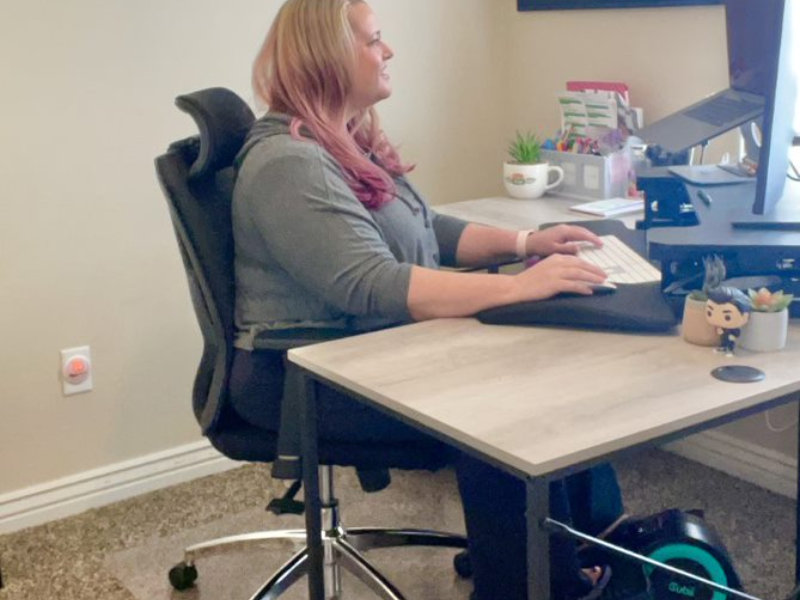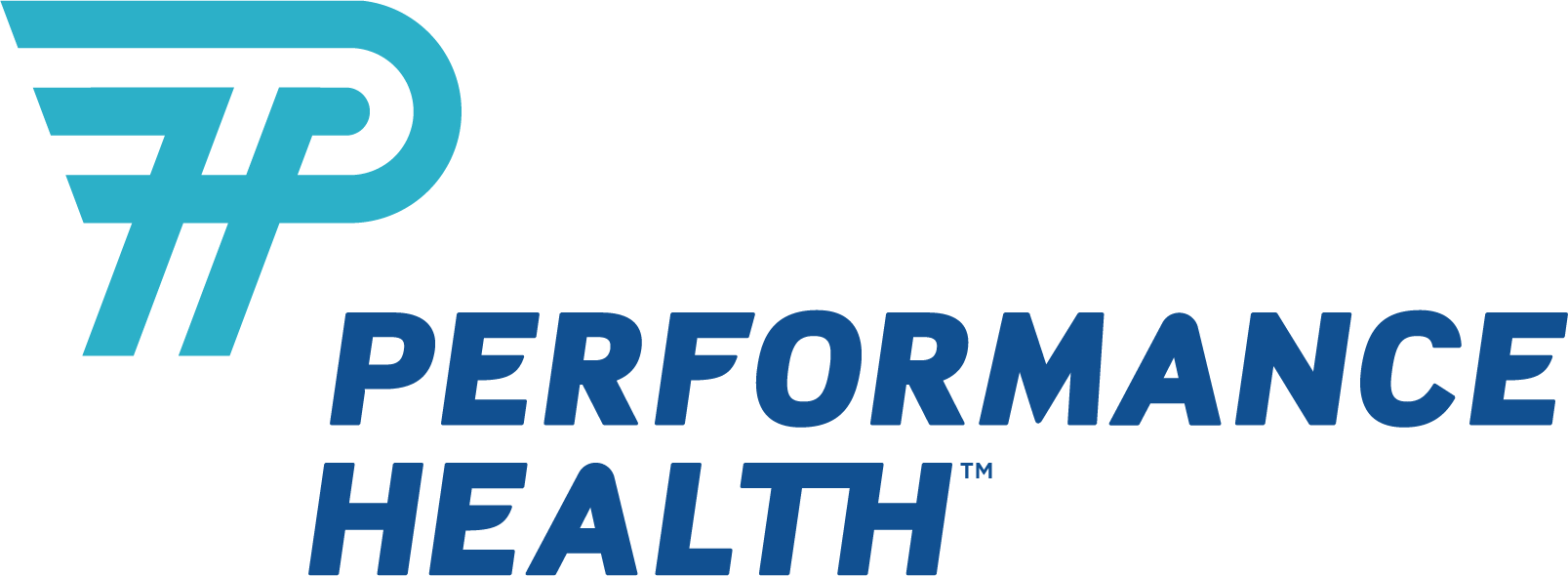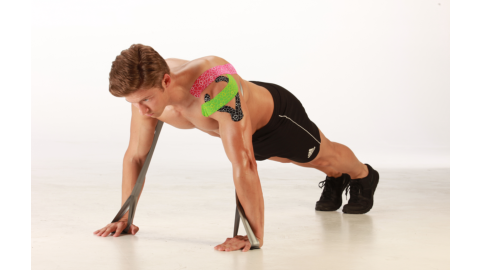Good posture is important for overall health and well-being as it can have a significant impact on the body and work performance. Poor posture can lead to several problems such as chronic back, neck, and shoulder pain.¹ It can also affect the alignment of the spine, leading to a range of musculoskeletal issues.² In addition, poor posture can negatively affect work performance by causing fatigue, decreased productivity, and increased absenteeism. In this article, we’ll go over the importance of having good posture and ways you can improve it through ergonomics and exercises.
Key Takeaways
-
Good posture has numerous benefits, including improving sleep quality, respiratory function, and muscular strength, as well as increasing self-confidence.
-
Therapists can play an important role in posture correction and pain management by providing targeted exercises and treatments aimed at improving posture and reducing pain.
-
Exercises that can help build and maintain posture include the plank, standing band resisted T-spine rotation, band pull apart, and spinal alignment through foam rolling.
Table of Contents
Benefits of Having Good Posture
How Therapists Can Aid in Posture Correction
Daily Exercises to Build and Maintain Posture
Ergonomic Tips and Stretches for Working from Home
Additional Resources for Improving Posture
Conclusion
Top Products in this Article
Benefits of Having Good Posture
Good posture can improve sleep quality by reducing pain, increasing respiratory function and oxygen intake, and strengthening muscles, reducing musculoskeletal injuries.3Additionally, good posture can increase self-confidence, leading to better overall health outcomes.4 By offering a range of benefits, good posture is a simple yet effective way to improve overall health and well-being.
How Therapists Can Aid in Posture Correction
Therapists can play an important role in posture correction and pain management by providing targeted exercises and treatments aimed at improving posture and reducing pain. These may include manual therapy, stretching, and corrective exercise programs designed to address postural imbalances and improve alignment.3 By working with a clinician, individuals can learn how to maintain good posture and reduce the risk of developing musculoskeletal problems. Simple exercises, like the examples below, can have a positive impact on your patient’s overall health and work performance.
Daily Exercises to Build and Maintain Posture
1. Plank
The plank exercise can help improve your patient’s posture by engaging the core muscles and promoting proper alignment of the spine. Planking is an effective method for improving posture and spinal alignment, especially in individuals with sedentary lifestyles or those who spend prolonged periods sitting.5
How to Plank:
The exercise involves holding a position like a push-up with the arms straight and the body in a straight line from head to heels. By engaging the core muscles, the plank can help stabilize the spine and promote proper alignment, which is essential for good posture.
Looking for an additional way to build your core? Our THERABAND® Stability Disc can be used for core, upper and lower extremity strength, and stability training.
2. Standing Band Resisted T-Spine Rotation
Standing band resisted T-spine rotations are another exercise that can help build and maintain good posture by targeting the thoracic spine and improving mobility.
A 2017 study found performing T-spine rotations with resistance bands, similar to the THERABAND resistance bands, resulted in significant improvements in thoracic spine mobility and posture in individuals with rounded shoulders and forward head posture.6
How to Do a T-Spine Rotation: The rotation exercise involves standing with a resistance band attached to a fixed object and rotating the upper body while keeping the hips stable. This movement targets the muscles of the thoracic spine and helps improve mobility, which is essential for maintaining good posture.
3. Band Pull Apart
The band pull apart exercise targets the muscles of the upper back and shoulders. By doing the band pull apart exercise effectively, a person can activate their upper trapezius and infraspinatus muscles, key muscles involved in shoulder stability and posture.7
How to Do a Band Pull Apart: The exercise involves holding a resistance band in front of the body with the arms straight and pulling the band apart by squeezing the shoulder blades together. By targeting the upper back and shoulders, the band pull apart exercise can help improve posture and prevent shoulder pain or injury.
4. Spinal Alignment
To help improve spinal alignment and reduce the risk of developing poor posture, try foam rolling to target the muscles of the back and hips. A study published in the Journal of Athletic Training found foam rolling resulted in significant improvements in spinal mobility and posture in individuals with limited back mobility.8
How To Do a Spinal Alignment: To perform the exercise, simply lie on a foam roller with the roller placed under the mid to lower back and gently roll back and forth.
Ergonomic Tips and Stretches for Working from Home
Everyone works a bit differently. That’s why we reached out to our Performance Health employees to learn more about what their favorite tips and stretches are when working from home!
Use a THERABAND Stretch Strap

“When working at home, I use the THERABAND Stretch Strap to help straighten my back and improve posture and flexibility while seated. The multi-loop, fabric design is easy to grip and provides a comfortable contract-relax stretch.”
- David W., Senior Branded Product Manager
Invest in an Adjustable Desk, Chair, or Monitor Stands

“Invest in adjustable chair, desk and monitor stands and then take the time to set everything at the right level so that it is comfortable.”
- Doug R., Director of Segment Marketing
Pedal on a Cubii Go

“When I have to sit for long periods of time on my computer, I enjoy using the Cubii to keep my legs moving. I think that it helps me concentrate while building strength. It is super quiet and not a distraction when I am on video calls.”
- Rachel K., Senior Social Media Manager
Set Alarms to Get Up and Walk

“I have alarms that will notify me when I need to take a work break and stand up or go for a walk. I walk my dog every three hours, which allows me to stretch out any stiffness I may have.”
- Briana S., Segment Marketing Specialist
Try a Medicine Ball Exercise

“I like to take the medicine ball and do squat lifts, bringing the ball from the ground to the sky and then rotating side-to-side to loosen up my back. I also do Medicine Ball Slams where I pick the ball up above my head and slam it into the ground. Both alleviate tightness and stress from working at home.”
- Chad P., Senior Manager of Digital Creative & Content
Additional Resources for Improving Posture
Conclusion
Good posture is crucial for maintaining overall health and well-being as it can have a significant impact on the body and work performance. By incorporating exercises and ergonomic tips into daily routines, individuals can improve posture and reduce the risk of developing musculoskeletal problems. Therapists can also play a vital role in posture correction and pain management by providing targeted treatments and exercises like the ones listed above.
References
- Hansraj, K. K. (2014). Assessment of Stresses in the Cervical Spine Caused by Posture and Position of the Head. Surgical Technology International, 25, 277-279.
- Chen, T. W., Li, C. H., Li, Y. T., Lin, C. H., & Chuang, L. L. (2018). The Effect of Thoracic Posture on the Neck and Shoulder Muscles During Arm Elevation. Journal of Motor Behavior, 50(6), 627-634.
- Smith, J. A. "Posture and Pain." In The Handbook of Chronic Pain Management (pp. 245-251). Springer, Cham, 2016.
- Cuddy, A. J. C., et al. "The Benefit of Power Posing Before a High-Stakes Social Evaluation." Harvard Business School Working Paper, 2015.
- Kim, D., Cho, M., Park, Y., & Yang, Y. (2015). Effect of an exercise program for posture correction on musculoskeletal pain. Journal of physical therapy science, 27(6), 1791–1794. bit.ly/3natccn
- Cho, J., Lee, E., & Lee, S. (2017). Upper thoracic spine mobilization and mobility exercise versus upper cervical spine mobilization and stabilization exercise in individuals with forward head posture: a randomized clinical trial. BMC musculoskeletal disorders, 18(1), 525. bit.ly/4478xql
- Dickie, J. A., Faulkner, J. A., Barnes, M. J., & Lark, S. D. (2017). Electromyographic analysis of muscle activation during pull-up variations. Journal of electromyography and kinesiology : official journal of the International Society of Electrophysiological Kinesiology, 32, 30–36. bit.ly/3oTmMyR
- Fonta, M., Tsepis, E., Fousekis, K., & Mandalidis, D. (2021). Acute Effects of Static Self-Stretching Exercises and Foam Roller Self-Massaging on the Trunk Range of Motions and Strength of the Trunk Extensors. Sports (Basel, Switzerland), 9(12), 159. bit.ly/3LjIO5l
Medical Disclaimer: The information provided on this site, including text, graphics, images and other material, are for informational purposes only and are not intended to substitute for professional medical advice, diagnosis or treatment. Always seek the advice of your physician or other healthcare professional with any questions or concerns you may have regarding your condition.






 US
US France
France Australia
Australia






